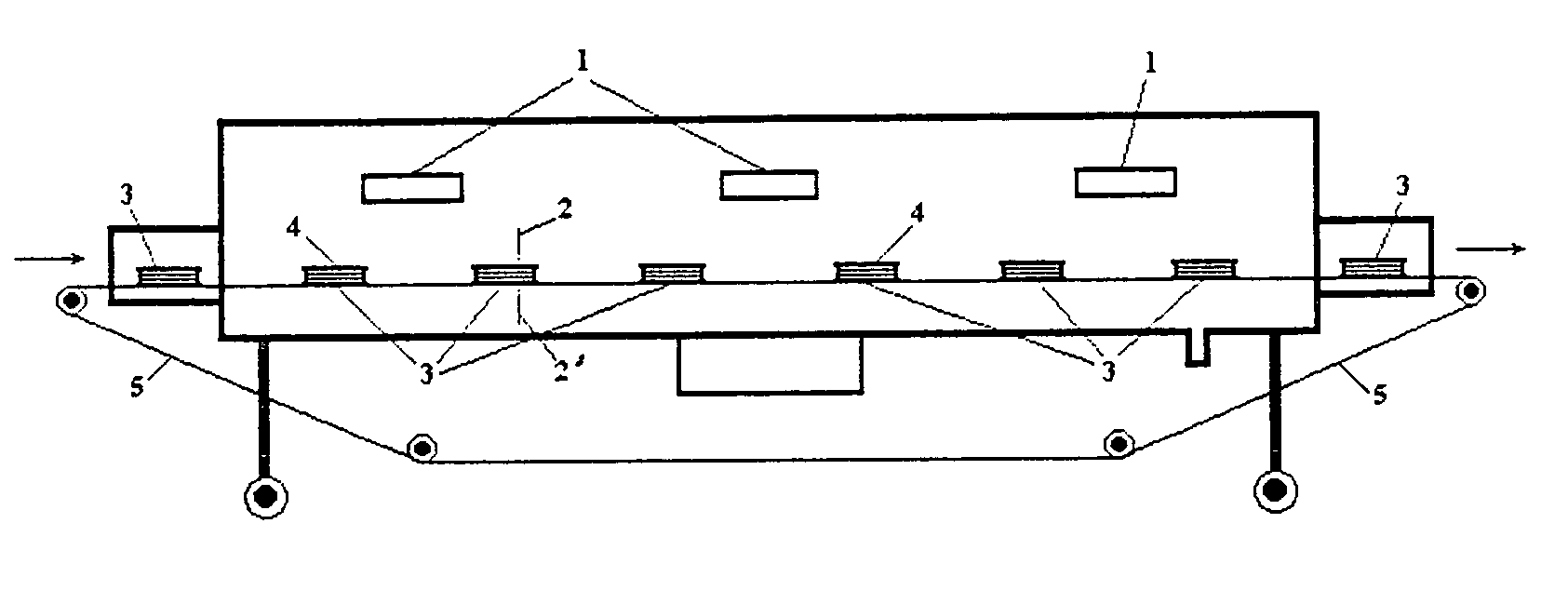Method of drying book and similar paper-based materials
a technology of paper-based materials and methods, applied in drying, light and heating equipment, furnace types, etc., can solve the problems of low quality of materials dried by a method of hot air and humid heat or low productivity, and high cost of vacuum drying and vacuum freeze drying, so as to improve the drying capacity of the microwave field, accelerate the drying process, and enhance the effect of the method
- Summary
- Abstract
- Description
- Claims
- Application Information
AI Technical Summary
Benefits of technology
Problems solved by technology
Method used
Image
Examples
example 1
[0021]Books containing 50–100% water, in wet or frozen state, were put into a batch microwave drying oven using a frequency of 2450 MHz and power 4 kW. The books occupied a space up to 50 litres and were arranged up to 100 mm thick layer and up to 500 mm in width. The books were lined on the upper and lower side with ceramic slabs of a porous material 10 mm in thickness having the water absorption capacity up to 100%. The slabs were provided with horizontal grooves and vertical holes in order to increase water absorption and to accelerate the drying process.
[0022]Thereafter the books were exposed to a microwave field equivalent to 0.1–1.0 kW / kg book. at a temperature control from 40 to 70° C. by IR pyrometer. After 30 to 60 minutes, depending on their size and water content, the books were dried, taken out and replaced by a new batch.
example 2
[0023]Wet or frozen books or other paper-based materials sized as in the Example 1 lined with ceramic slabs 5 to 15 mm thick, depending on the thickness of the paper layer, were inserted at the inlet of a belt conveyor running into a continuous microwave drying oven operating at a frequency of 915 MHz and power 12 kW, and the materials pass through a drying tunnel at a velocity of 0.1–1.0 m / min, for example. After passing the defrosting, drying, and sterilisation zones in total duration of 5 to 20 minutes the dried books were replaced by a new specimen and insufficiently dried books were automatically returned back into the drying process. The drying rate was controlled by the velocity of the belt and by adjusting the microwave power. The resulting dried material left the oven in the sterilised condition.
example 3
[0024]Wet or frozen books lined with ceramic slabs as in Example 1 or 2 were inserted into a discontinuously operated microwave drying oven using a frequency 2450 MHz and power 16 kW. The oven was closed and its internal drying room was evacuated to a pressure of 10–50 kPa. The microwave irradiation combined with reduced pressure (vacuum) caused very fast drying under very mild conditions (30–50° C.) yielding finally uniformly dried material.
PUM
| Property | Measurement | Unit |
|---|---|---|
| frequency | aaaaa | aaaaa |
| frequency | aaaaa | aaaaa |
| frequency | aaaaa | aaaaa |
Abstract
Description
Claims
Application Information
 Login to View More
Login to View More - R&D
- Intellectual Property
- Life Sciences
- Materials
- Tech Scout
- Unparalleled Data Quality
- Higher Quality Content
- 60% Fewer Hallucinations
Browse by: Latest US Patents, China's latest patents, Technical Efficacy Thesaurus, Application Domain, Technology Topic, Popular Technical Reports.
© 2025 PatSnap. All rights reserved.Legal|Privacy policy|Modern Slavery Act Transparency Statement|Sitemap|About US| Contact US: help@patsnap.com


